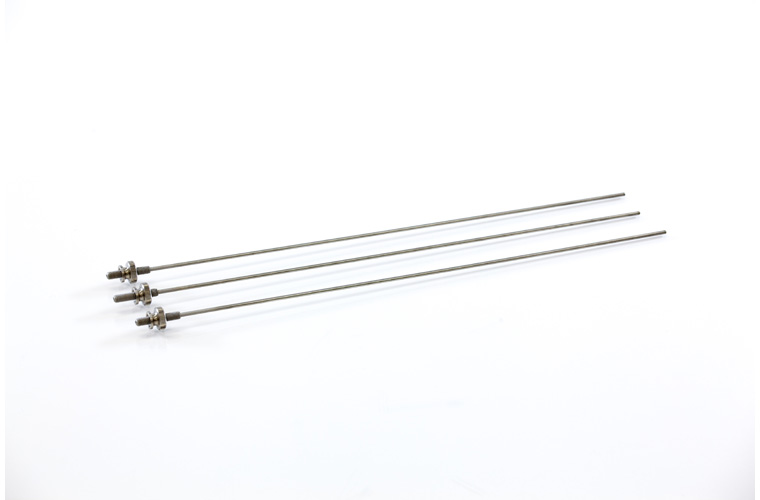Main Menu
- Home
- Product Finder
- Calibration Systems
- Calibration Services
- Digital Sensing
- Industrial Vibration Calibration
- Modal and Vibration Testing
- Non-Destructive Testing
- Sound & Vibration Rental Program
- Learn
- About Us
- Contact Us
 An excitation stinger
consists of a thin, flexible rod, with attachment means at both ends. The stinger transmits forces in the stiff axial direction and flexes laterally to reduce input side loads to the structure. Reducing the side loading is important because the lateral
structural inputs are not measured by a uniaxial reference force sensor. These forces, which enter a test structure and are not measured as input, add noise to the measurement process. Therefore, elimination or relocation of these lateral inputs improve
the accuracy of the measurement.
An excitation stinger
consists of a thin, flexible rod, with attachment means at both ends. The stinger transmits forces in the stiff axial direction and flexes laterally to reduce input side loads to the structure. Reducing the side loading is important because the lateral
structural inputs are not measured by a uniaxial reference force sensor. These forces, which enter a test structure and are not measured as input, add noise to the measurement process. Therefore, elimination or relocation of these lateral inputs improve
the accuracy of the measurement.
The force transducer should be rigidly fixed to the test article and the stinger should be placed between the exciter and the force transducer. This configuration is necessary to avoid problems with the inertial effects and resonant behavior of the stinger, which cause errors in measurement of the force. Some of the applied force will be absorbed because the stinger’s mass must be accelerated to the desired vibration level. Furthermore, at a resonance of the stinger, the stinger will alter the transmission of force through it to the test article, resulting in dynamic decoupling of the exciter from the article.
The stinger also helps to isolate the exciter armature from the structure, lessening inadvertent shocks and possibly prevent damaging a fragile exciter armature. Likewise, the stinger can protect a fragile structure from large, inadvertent excitations.